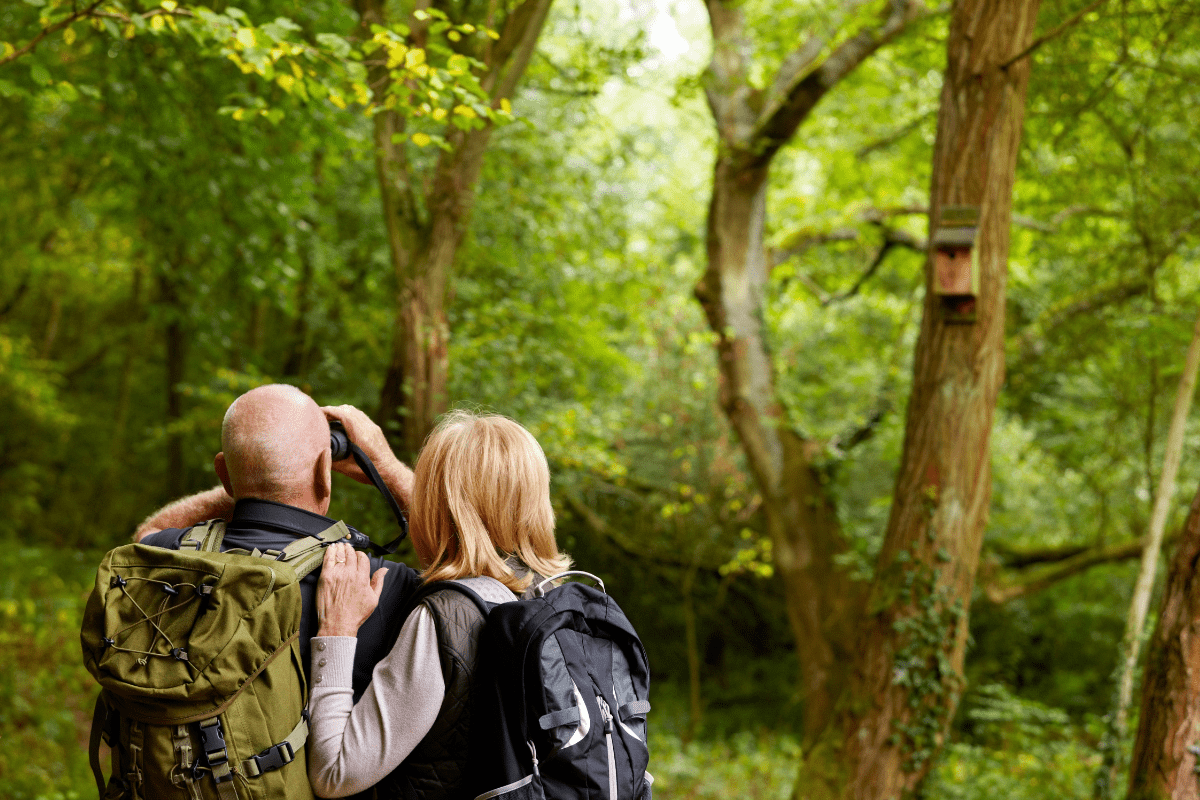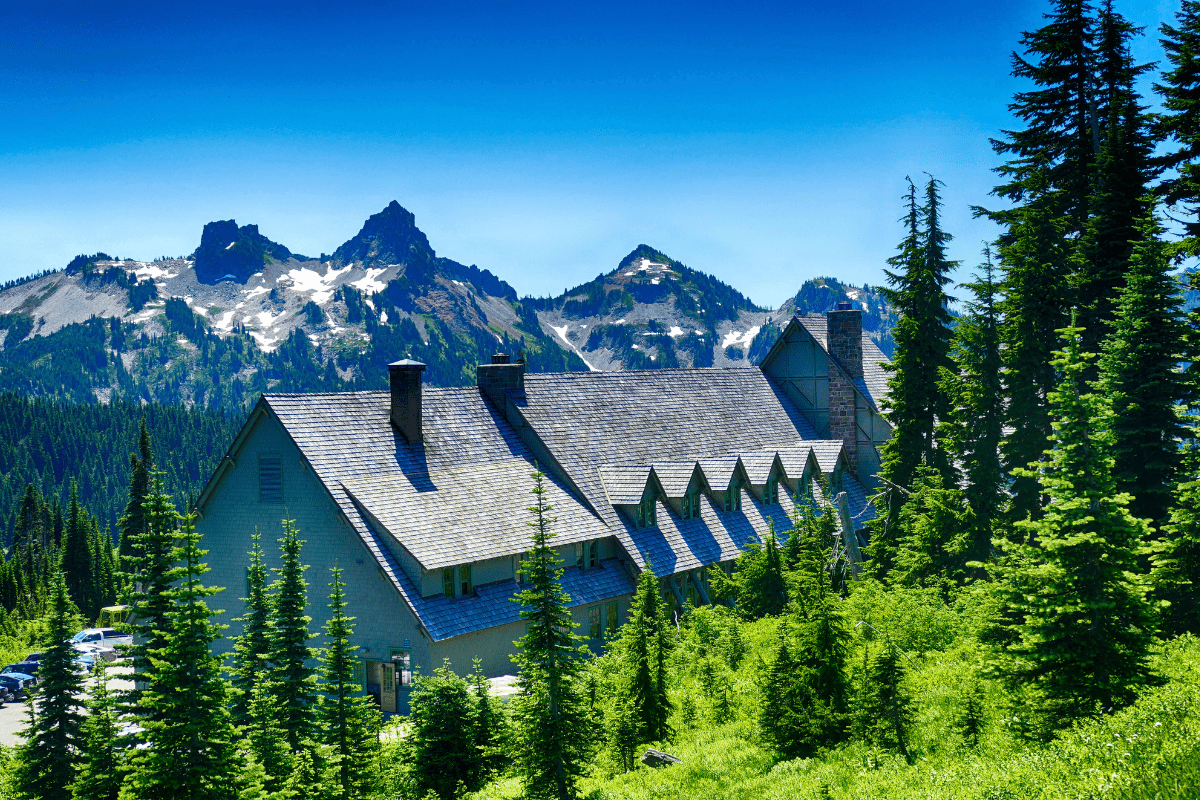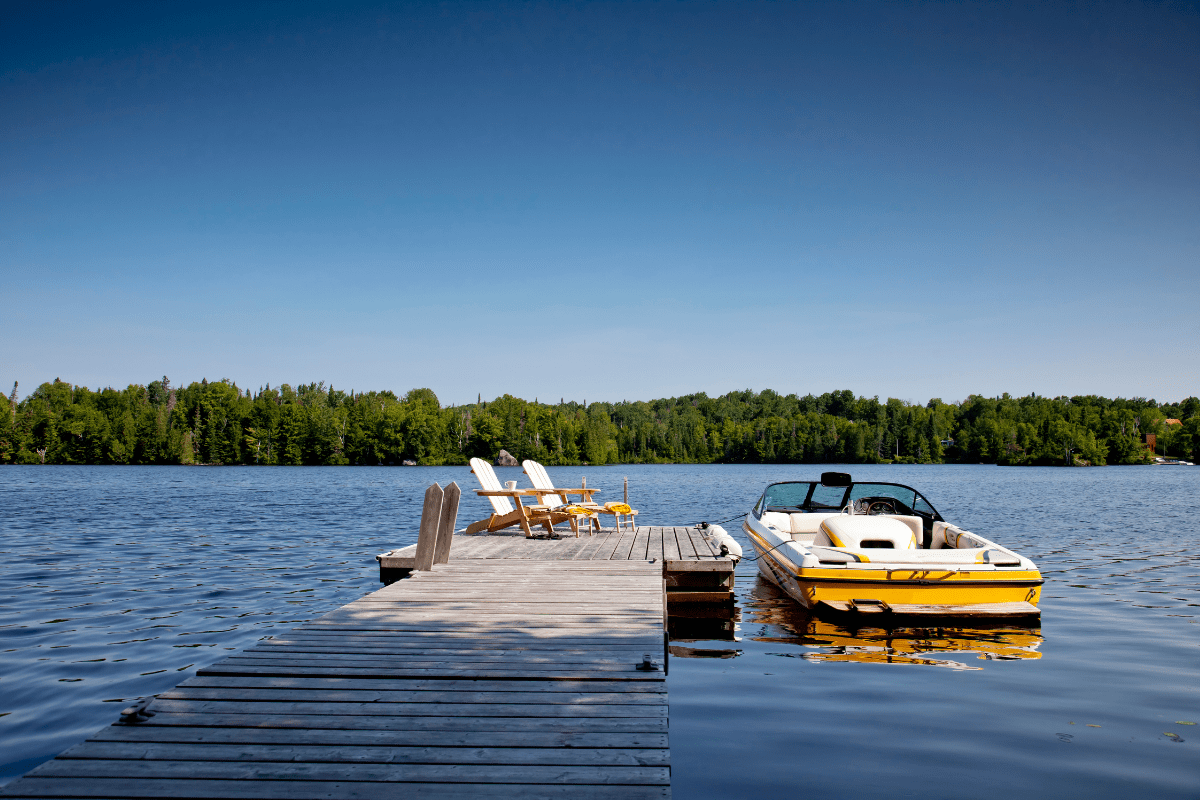Let's be honest… spotting wildlife in their natural habitat beats scrolling through nature documentaries any day. Washington state happens to be ridiculously good at serving up these moments, whether you're after massive Roosevelt elk munching their way through rainforests or pods of orcas doing their thing in the Salish Sea. Consider this your cheat sheet for actually seeing these creatures without spending three days hiding in a bush (though sometimes that works too).
Where to find Washington's most impressive wildlife
Finding wildlife isn't just about showing up somewhere green and hoping for the best. Each species has its favorite hangouts, and knowing where to look dramatically improves your chances of that "oh wow" moment.
Olympic Peninsula for Roosevelt elk
The Olympic Peninsula is basically elk central, hosting around 5,000 Roosevelt elk, the largest known population living anywhere. These aren't your average elk either… Roosevelt elk are the bodybuilders of the elk world, with bulls weighing up to 1,200 pounds.
Your best bet for elk spotting starts in the Hoh Rainforest, described as one of the best places in the world to see Roosevelt elk. Herds roam lush, moss-covered forests along the Hoh River Trail. The Quinault Rainforest runs a close second, especially if you check out the areas near the golf course on South Shore Road or near the Kestner Homestead on North Shore Road.
For the ambitious folks, there's the Enchanted Valley trail. Fair warning: this requires an overnight permit and a 13-mile hike. But bears are extremely common in the area, with most visitors seeing several, so you might get a wildlife twofer.
San Juan Islands for orca watching
The San Juan Islands have earned their reputation as arguably the best place to see orcas in the wild in the US. Both resident orcas (the salmon eaters) and transient orcas (the seal snackers) cruise through these waters.
Lime Kiln Point State Park, also known as Whale Watch Park, is one of the best places in the world to spot whales (especially orcas) from shore. The park sits on San Juan Island's west side, where patient whale watchers are often rewarded with close passes.
Tour operators report impressive success rates, with a 90% chance of seeing whales during the peak months of June – September. Not bad odds, especially compared to my success rate at finding matching socks.
Skagit River for bald eagle gatherings
The Skagit River transforms into eagle central each winter, hosting the largest concentration of eagles in the lower 48 States. We're not talking about a few birds here and there… during the peak of the migration it is common to see 100 to 200 plus birds in a 3 hour Skagit River Eagle Tour.
The eight-mile stretch between Rockport and Marblemount becomes eagle paradise. Howard Miller Steelhead Park in Rockport offers easy access and even has an interpretive center open on winter weekends. The Milepost 100 Rest Area at Sutter Creek provides another solid viewing spot with plenty of parking.
Columbia National Wildlife Refuge for sandhill cranes
Every spring, Columbia National Wildlife Refuge hosts one of nature's most impressive flash mobs when approximately 35,000 lesser Sandhill cranes follow the Pacific Flyway, coming through eastern Washington during their spring and fall migrations.
The Corfu area, 12 miles west of Othello, south of Route 26, is the best area for viewing Sandhill Cranes in March and early April. The refuge spreads across nearly 30,000 acres, mixing dramatic cliffs with wetlands that attract these prehistoric-looking birds.
Best times to see specific animals
Timing matters more than you'd think when it comes to wildlife viewing. Show up at the wrong time and you'll see a lot of empty forest.
Seasonal wildlife calendar
Spring brings migrating sandhill cranes to Columbia NWR, peaking in March and early April. Gray whales cruise northward along the coast, while Roosevelt elk welcome their spotted calves. Black bears emerge from their winter naps, probably as grumpy as you'd expect.
Summer means prime orca season in the San Juan Islands. Peak season, though, is April through October, with most Bigg's orca sightings occurring early June through late September. Mountain goats become more visible in high alpine areas as snow melts.
Fall delivers the Roosevelt elk rut, complete with bugling bulls and dramatic showdowns. The Roosevelt elk tend to be most active in the early morning and evening hours, making these the best time to view and hear them. Salmon runs attract hungry bears and eagles.
Winter transforms the Skagit River into bald eagle headquarters. December and January is the best time to see Skagit Valley bald eagles, with the number of bald eagles usually peaking the week of Christmas.
Daily timing strategies
Most wildlife follows the "early bird gets the worm" philosophy, except they're usually the ones looking for actual worms (or fish, or grass). Dawn and dusk typically offer prime viewing, though each species has its quirks.
There is typically no best time of day to see whales, so pick a time that works best for you. Eagles prefer mornings for feeding, while In the late morning and early afternoon on cloudy, rainy days, bald eagles can be seen roosting in trees along the river.
Essential gear for wildlife watching
You don't need to raid an outdoor store to see wildlife, but a few key items make a huge difference between "I think that's a bird" and "that's definitely a golden eagle."
Choosing the right binoculars
Binoculars are perhaps your most indispensable piece of wildlife watching equipment. But choosing the right pair can feel like picking a breakfast cereal… too many options.
Most birders prefer 7- or 8-power binoculars because they're bright and have a wide field of view, making it easier to find birds and to follow them in flight. For lens size, Optics with objective lenses—the glass at the fat end of the tube—larger than 42 mm are heavier, and those smaller than 30 mm, while lightweight, aren't bright enough to show detail in poor light.
Price ranges worth considering:
- Budget tier: $130-$240
- Mid-range quality: $240-$650
- Premium glass: $1,000+
- Mortgage payment tier: $2,000+
Our #1 tip is to try as many binoculars as you can before you buy. Because ergonomics have such an effect, there's really no substitute for feeling them in your hand.
Photography equipment basics
For those wanting to capture their sightings, here's what actually matters:
Start with a telephoto lens of at least 300mm for wildlife. A good rule of thumb for wildlife photography is to set the ISO in the mid-range, somewhere around 400 – 800. This gives you flexibility for changing light conditions.
Generally speaking, you'll want a fast shutter speed to freeze the motion of moving animals. Try 1/250, 1/500 or even faster. Nothing ruins a photo faster than motion blur, unless you're going for that artistic "ghost elk" look.
Additional helpful gear
Beyond optics, pack these essentials:
- Layered clothing (Washington weather is moody)
- Rain gear that actually works
- Snacks and water
- Field guide or ID app
- Patience (lots of it)
- Comfortable hiking boots
- Bear spray for certain areas
Practical viewing tips by species
Each animal requires a slightly different approach. What works for elk might send bears running for the hills.
Watching orcas and whales
Orca watching from shore requires patience and good timing. If you see whales from south beach headed northwest, they are probably headed "up island" and will pass very close to shore at Lime Kiln State Park.
For boat tours, remember that most outfitters don't guarantee sightings, but they do boast a 90% viewing rate. Tours typically last 3-4 hours, so dress warmly and bring dramamine if you're prone to seasickness.
Finding Roosevelt elk
Elk prefer open fields and meadows near the edge of the forest. Their preferred browse grows mainly in meadows and open spaces. During storms, they retreat into forest cover.
The key to elk viewing? Think like an elk. Often, the elk can be seen near the golf course on South Shore Road or near the Kestner Homestead and Ranger Station on the North Shore Road. Apparently, elk appreciate manicured lawns too.
Black bear encounters
Let's address the elephant (or bear) in the room: bear safety. Stop, remain calm, and assess the situation. If the bear seems unaware of you, move away quietly when it's not looking in your direction.
I carry lightweight binoculars when I hike in bear country, says one experienced bear watcher. This lets you enjoy bears from a respectful distance, which is better for everyone involved.
If a bear walks toward you, identify yourself as a human by standing up, waving your hands above your head, and talking to the bear in a low voice. Yes, you'll feel silly. Yes, it's better than the alternative.
Mountain goat spotting
Mountain goat numbers aren't what they used to be. The most recent statewide estimate of mountain goats in Washington state by Washington Department of Fish and Wildlife (WDFW) was in 2012 and estimated approximately 2,800 goats.
Your best chances involve heading to high alpine areas in the North Cascades. The Blue Lake Trail offers one of the shorter hikes into goat country at 4.4 miles. Look for white dots on impossible-looking cliff faces.
Wildlife photography strategies
Getting good wildlife photos requires more patience than skill, though skill certainly helps.
Camera settings that work
DO: Be Prepared. Have your camera in hand or quickly accessible by using a quick-access backpack or shoulder bag. Wildlife doesn't wait for you to dig through your bag.
Key settings to remember:
- ISO 400-800 for flexibility
- Shutter 1/500 or faster
- Continuous autofocus mode
- Burst mode enabled
- Extra batteries ready
- Memory cards… plural
Ethical photography practices
DO: Know Your Subject. If you're looking for specific types of wildlife, research the habits of the animal before setting out on the trail. This isn't just about getting better photos… it's about not being "that person" who ruins it for everyone.
Never bait animals for photos. You should never, ever, try to bait an animal (including chipmunks and birds) with food in hopes of attracting it or getting it to come closer for you to photograph.
Top wildlife viewing locations
Let's get specific about where to go for the best chances of success.
Olympic National Park highlights
Beyond the famous Hoh Rainforest, check out these spots:
- Quinault Valley for massive elk herds
- Hurricane Ridge for mountain goats
- Enchanted Valley for bears and elk
- Kalaloch beaches for sea otters
San Juan Islands hotspots
- Lime Kiln Point State Park for shore-based viewing
- South Beach to Grandma's Cove trail
- Cattle Point Lighthouse area
- Friday Harbor for departure points
Lesser-known viewing areas
Little Pend Oreille National Wildlife Refuge (pronounced "ponderay") sits about 80 miles north of Spokane and covers a wide range of environments at the base of the Selkirk Mountains and across the broader Okanogan Highlands. The state's largest wildlife refuge comprises 42,600 acres.
The Nisqually National Wildlife Refuge near Olympia offers 2-mile boardwalk along McAllister Creek where you can spot everything from river otters to bald eagles without venturing far from Seattle.
Planning your wildlife viewing trip
Success often comes down to preparation and realistic expectations.
When to visit each location
Plan your trips around wildlife schedules, not yours:
- Orcas: June through September
- Roosevelt elk rut: September to October
- Sandhill cranes: March to early April
- Bald eagles: December through January
- Black bears: April through October
- Mountain goats: July through September
Access requirements and permits
You may need a Discover Pass. The pass is required on state recreation lands and water-access sites managed by Washington State Parks (State Parks), Washington Department of Fish and Wildlife (WDFW) and Washington State Department of Natural Resources (DNR).
Some locations require additional permits:
- Backcountry camping permits
- Parking reservations (summer weekends)
- Special area passes
- Boat launch permits
Safety considerations
Wildlife viewing should be memorable for the right reasons. Basic safety rules:
- Maintain proper distances (minimum 25 yards for most wildlife, 100 yards for bears)
- Carry bear spray in bear country
- Tell someone your plans
- Bring communication devices
- Know your limits
- Check weather forecasts
Bear spray, a potent form of pepper spray, is also a good deterrent. It is more effective than guns since it has a range of 90 feet and doesn't need to be accurately aimed.
Making the most of your experience
Wildlife viewing rewards patience and persistence more than fancy gear or perfect timing.
Respecting wildlife and habitats
Remember you're a visitor in their home. People appreciate wildlife in many ways, from hunting and tracking to birding and photography. While you enjoy time outside, be mindful of how your actions may impact others, including wildlife.
Simple respect guidelines:
- Stay on designated trails
- Pack out all trash
- Keep voices down
- Don't pursue animals
- Leave no trace
- Share viewing spots courteously
Contributing to conservation
Your wildlife watching can support conservation efforts. Consider:
- Purchasing a Washington Wildlife license plate
- Reporting sightings to eBird or iNaturalist
- Joining guided tours that support research
- Volunteering for wildlife counts
- Supporting local conservation groups
- Following Leave No Trace principles
The more people who see and appreciate wildlife, the more support exists for protecting these incredible creatures and their habitats. Every respectful wildlife viewer becomes an advocate for conservation.
Final thoughts
Washington's wildlife viewing opportunities rank among North America's best, from the Nisqually National Wildlife Refuge is an absolute gem and our favorite place to see wildlife in Washington State to the remote corners of the North Cascades.
Success comes from preparation, patience, and respect for wildlife. Whether you glimpse a distant mountain goat or find yourself watching dozens of eagles feast on salmon, each encounter offers a connection to Washington's wild heart.
The animals were here first, and with responsible viewing practices, they'll be here for future generations to marvel at too. Now grab those binoculars, check the weather, and get out there. The wildlife is waiting, though probably not specifically for you.





